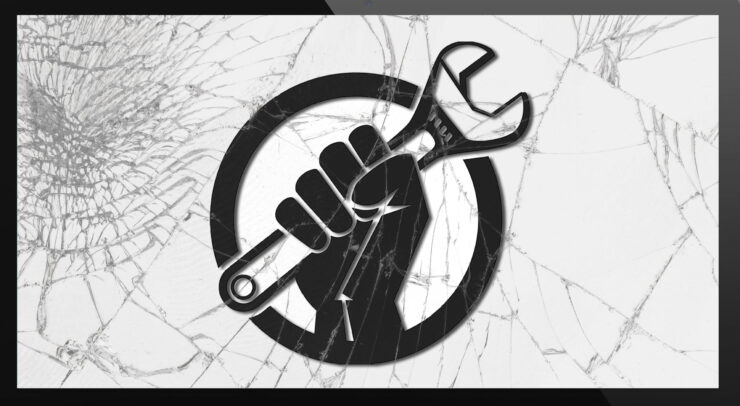With device repairs getting more complex, not always having to buy a new device could help tight budgets.
Most students attending a Canadian university have grown accustomed to using a very expensive laptop and cell phone while attending class. Typically, students will use either a Windows laptop or a MacBook, with a small group using Chromebooks and Androids. When it comes to cell phones most students either own an iPhone or an Android device.
However, with more expensive devices comes a lack of repairability.
On Oct. 8, 2018, CBC’s The National took a look at Apple’s genius bar and the amounts they charge to repair devices and some of their more devious business practices.
The “right to repair movement” is a movement that focuses on allowing consumers to have access to the equipment, manuals and replacement parts that are necessary to repair their own devices. This would be similar to how the automotive sector allows customers to service their own cars, or go to a third party mechanic if they wish.
When it comes to many Windows devices and Apple computers, schematics and replacement parts are not always readily available, but can come from third parties or taken from donor boards.
Michael Xiang, the lead technician of CampusTec, a computer repair center located on the U of O campus, explained the problems service centres can encounter with Apple products as the apple certified repair program makes repairing products more difficult. Xiang was trained by Louis Rossman, an Apple repair technician, activist and business owner, with a YouTube following of over 1 million subscribers.
“Apple has very stringent guidelines in terms of the facilities,” said Xiang. “For example, they require everything to be basically white, they require a reception area, and any of the technical activities that go on to be in the backroom.”
Board level repair is a specialty of Xiang’s store, as many devices require components on the motherboard to be replaced.
“Apple doesn’t really deal with board level repairs, they just replace it.”
Many of these components on a motherboard cannot be sold to third parties and have to either be pulled off of a doner device, or the part needs to be replaced entirely. As well, the schematics required to trace issues on a motherboard are only available from third parties and are not made available by Apple.
The only way to get access to the parts necessary to repair these devices is to go through Apple’s Independent Repair Provider program but this can bring added problems for independent repair companies.
Xiang notes, “if you want everything with genuine official Apple parts, you’re essentially looking at a monopoly.”
“For us as a service center, if we do go through the latest program with Apple you have to order parts one by one and service time is extremely long.”
With all of these issues, repairs have become more expensive and many consumers are stuck with replacement parts from third parties that are not genuine parts to fit their devices.
A screen repair from Apple that is out of warranty can cost as high as $429 for the iPhone 11 Pro Max. For many students, these prices are extremely high, and the premium price for a genuine part from Apple may not be within reach.
According to Statistics Canada, 73 per cent of students working a part time job reported doing so to afford their education. External expenses such as textbooks, electronics, food and rent can make these added costs for a phone repair unreasonable. Plus, there is always a chance of a loss of data that can occur.
There is also a risk involved in the repair of devices in general. Xiang, however, assures “the chance of damage occurring is extremely, extremely low.”
“It’s the same for any other industry. For example, you might have one symptom, and then when we do examine that system we notice that a bunch of others appear, similar to repairing a car.”
With new devices having their components soldered to the motherboard, and the new MacBook keyboard design being riveted to it’s chassis, (whilst frequently breaking,) repairs to these devices have become quite difficult.
“Users should be given the opportunity to have a crack at repairing their own stuff and after all, these are not cheap devices, they’re very, very expensive,” said Xiang. “Before choosing to invest in a new device, things should be repaired as people are buying and throwing away these devices, and it’s not very good for the environment,”
“Nobody wants to pay thousands [of] dollars every few years for something that could last longer. Back in the day, everything could be repaired. Now, technology’s obviously gotten more complex. So it’s definitely a lot harder.”
With Ontario’s Bill 72 (Consumer Protection Amendment Act [Right to Repair Electronic Products]) and it’s goal to provide consumers with the right to repair being voted down, many activists such as iFixit or Rossmann, have been pushing for this legislation to pass, and providing insight on some of the troubles involved in repairing modern devices.
“We do have the tools, and there are many shops around, not only locally, that doe, so there’s definitely more competition. And as you have more competition, you lower the price,” said Xiang.







